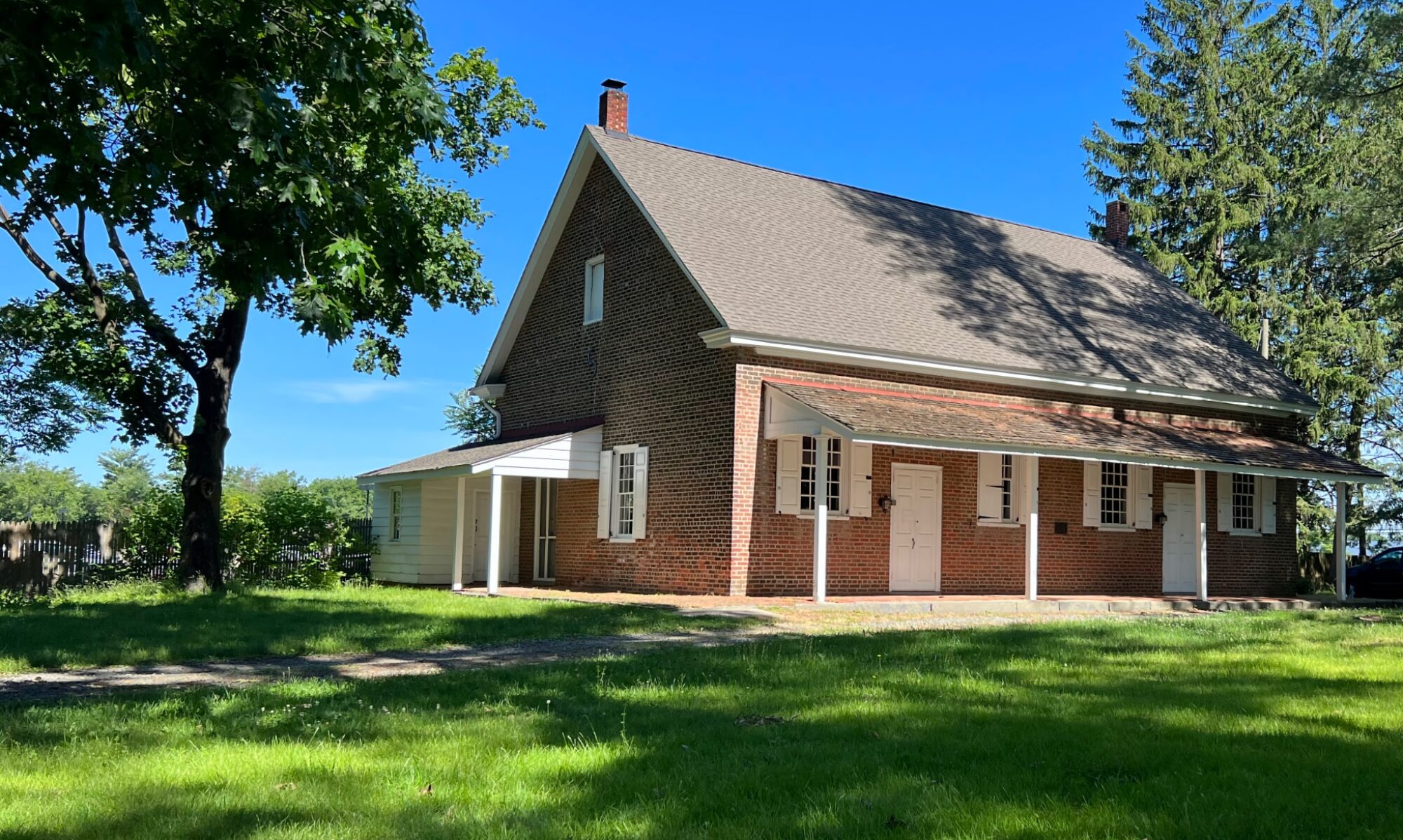Over three dozen local history enthusiasts came to Cropwell Meeting this Sunday to hear a presentation by Paul W. Schopp on antebellum free Black communities in the Marlton area. Schopp is a historian who has been researching historic Black South Jersey towns for over three decades. He has identified 140 “fugitive slave enclaves” in the southern counties of the state. Milford, New Jersey (later renamed Kresson) was one such town, whose residents enjoyed longstanding connections to Cropwell Meeting.
Schopp set up the history: in 1776, Philadelphia Yearly Meeting decided that no members could hold slaves. With slavery ended in the Religious Society of Friends, Quakers in Southern New Jersey began lobbying the colonial—and later state—government to allow for easier manumissions and total abolition. [A law for gradual abolition passed the state legislature in 1804.]
The woods of free South Jersey began attracting Africans in bondage, especially from Maryland. As the number of free Blacks grew, enclaves attracting fugitive slaves began to develop. Schopp stressed that these enclave towns were not “stops” on the Underground Railroad (temporary resting places before travel elsewhere) but “terminals”—towns where escaping enslaved people settled. Timbuctoo outside Mt Holly served as a template for these communities. These settlements were often on the margins of White communities or in rural districts, usually on sandy land with only marginal productive use. The men often worked in local brickyards; the women as house servants.
Schopp finished by regaling the audience with heart-stopping stories of slave catchers who kidnapped whole families and the White abolitionists who went back into slave territory in disguise to negotiate for their return to South Jersey.








The audience was fascinating mix. The meeting had publicized the the talk among local historical societies and African American history networks. The talk attracted members from area Quaker families; a member of Milford’s Truitt family (whose grandmother worshiped at Cropwell in the early twentieth century); a docent from the African American Museum in Philadelphia; sisters who had grown up in Milford/Kresson decades ago; as well as a number of local history buffs.
Many of the attendees came early to attend Cropwell’s worship service. The meeting’s clerk made sure to go around the room welcoming everyone in turn and inviting them to share where they were from and why they had come. A number of attendees said it was their first Quaker meeting for worship.
At worship, the clerk asked a member to read from a 1966 memoir, Answered Prayers, by Paul S. Lippincott Jr., a recorded minister and lifelong Friend at Cropwell. Here is part of that reading:
With this background of the Society of Friends, which is more or less mystical religion, it would probably account for one of the early experiences I had when I was in my late twenties or early thirties. I had been reading some religious books before retiring for the night, and after a short period of prayer it became very clear to me that I should go out and gear up the horse. Not having any car in those days, or any electricity, I lighted the old kerosene lantern and went out to the stable and harnessed the horse. It was very clear to me as I went out the lane that I turn settlement about 2 miles west of Marlton, known as Milford. Since there was a Milford in North Jersey the name was later changed to Kresson. In this settlement was a little country store which was still lighted on this particular evening. Without any preparation at all it seemed to me that I should stop at the store and purchase some staple items of food for someone. Until that time I had no idea where I was going to take this food, but after purchasing some canned food and staple items that could be kept for a few weeks without refrigeration, I remembered an old colored lady named Margaret Worthington, who lived in a cabin by herself. I had never met her but I felt that I was to drive in that direction. In about ten minutes I pulled up at the little one room cabin where there was a light through the window, and as I went to the door, I heard her voice praying for help and food. I was there under unusual circum stances to answer the fervent prayers of a believing soul. I left the food and that was the beginning of an unusual friendship.


Two Truitt descendants, Damon Truitt and Patti McGee Colston, were featured in the Roots Less Traveled TV show last year, much of which was filmed at Cropwell Meeting. Damon came to Cropwell for the event.


